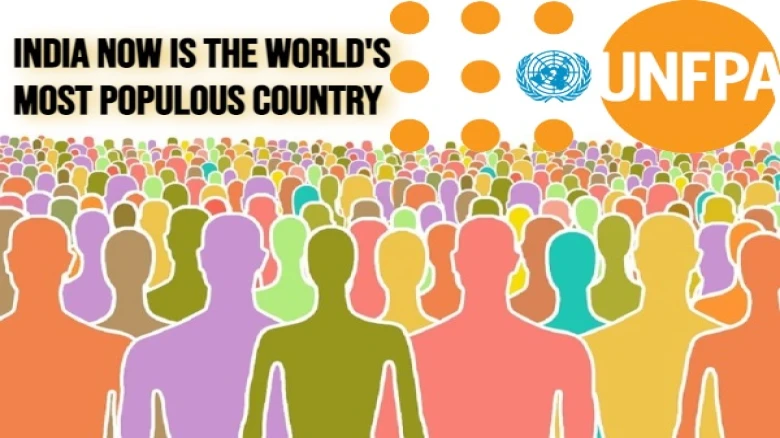As per experts, India's young population would play a major part in driving the country's development in...
Following UNFPA's report 'The State of World Population Report, 2023,' headlined '8 Billion Lives, Infinite Possibilities: The Case for Rights and Choices,' issued on Wednesday, India's population is 1,428.6 million, while China's is 1,425.7 million, a 2.9 million difference.
The most recent numbers were provided in the report under the category of "Demographic Indicators."
It is the first time that India's population has surpassed China's since 1950 when the UN began gathering and releasing demographic data.
"Yes, though it is unclear when the crossover occurred and direct comparisons can be difficult due to the slightly different timings of countries' individual data collection," Anna Jefferys, UNFPA's media and crisis communications advisor, said in an email when asked if India's population had surpassed China's.
"What we can say is that China's population peaked last year and began to decline and that while India's population is growing, its population growth rate has been declining since 1980," Jefferys stated.
According to the UNFPA research, 25% of India's population is aged 0-14, 18% is aged 10-19, 26% is aged 10-24, 68% is aged 15-64, and 7% is over 65.
China's equivalent percentages are 17%, 12%, 18%, 69%, and 14%, implying that the country has nearly 200 million people over the age of 65.
China outperforms India in terms of life expectancy, which is 82 years for women and 76 years for males. According to the research, the values for India are 74 and 71.
According to experts, India now has a demographic advantage. "Its young population in a consumer-driven economy will be a major factor driving the country's development, and presents an enormous opportunity for the country's economic growth," Andrea Wojner, UNFPA's India representative, said.
Based on Chinese demographics specialist Huang Wenzheng's statement, India's advantage is that it is still growing, although at a slower rate than before.
China's population fell by 850,000 in 2022, the first drop since 1961.
Since Beijing eliminated the one-child policy and then permitted three children, the number of births in China has not increased as projected. Rising living, childcare, and education expenditures are among the primary factors.
"There is no perfect population number for either country, but more important is how India and China can support their populations," Jefferys explained.
Overall, the UNFPA report advocated for a "radical rethink" of how population statistics are presented. It advised politicians and the media to stop exaggerating population rise and falls.
"Rather than asking how quickly people reproduce, leaders should ask whether individuals, particularly women, are free to make their own reproductive choices - a question to which the answer, all too often, is no," the UNFPA said in a statement released alongside the research.
"Women's bodies should not be held captive to population targets," stated UNFPA Executive Director Natalia Kanem.
"To build thriving and inclusive societies, regardless of population size, we must radically rethink how we talk about and plan for population change," she added.

Leave A Comment